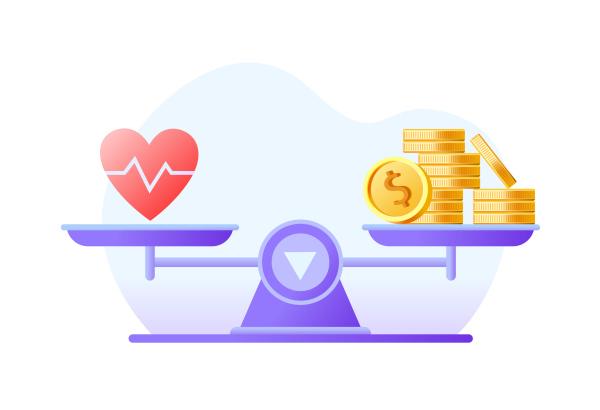Hospitals, health systems, and other healthcare providers nationwide are under immense pressure to reduce expenses in today’s age of inflation and high labor costs fueled by widespread workforce shortages.
In addition to implementing effective strategies for long-term change, healthcare organizations must remain agile and able to respond quickly to sudden market shifts in the near term. Having reliable data, healthcare analytics, and business intelligence are essential to both.
“Healthcare is changing significantly, and organizations have to be nimble,” said Bobby Singh, Senior Director of Performance Improvement with Huron Consulting. “The cost structure and the pressure's not going to stop anytime soon. The precision, accuracy, and timeliness of the data and information is going to matter more and more. You have to get creative and really challenge your organization to think about how you could do things differently.”
Singh was one of three panelists who spoke at a recent Syntellis forum about how organizations use healthcare data and analytics to address key financial challenges. Three themes emerged from the discussion:
- Leveraging data to build transparency and trust
- Benchmarking to drive better labor planning
- Using data as a compass for change
Mount Nittany Health Uses Analytics to Improve Transparency, Trust
Finding the right data and peer groups for benchmark comparisons is critically important but can be a challenge, especially for smaller organizations. Mount Nittany Health, a 260-bed medical center in State College, Penn., wanted to ensure it had the right external data for department-to-department comparisons to guide strategic planning.
“As a single hospital facility, we don't have that advantage of having multiple hospitals within our own system to compare to,” said April Strouse, Director of Financial Planning, Business Intelligence, and Decision Support at Mount Nittany Health. “Without external data, we don't really know how we're doing compared to everybody else.”
Before implementing Syntellis’ AxiomTM Comparative Analytics, the medical center struggled with poor transparency — they couldn’t identify data sources in their previous solution and couldn’t make true apples-to-apples comparisons, which caused managers and other leaders to mistrust the numbers. As a result, other departments often rejected recommendations from the finance team based on those figures.
“Before Axiom, we didn’t have a lot of buy-in with our benchmarking processes,” Strouse said. “There wasn’t a lot of visibility or validation with the data. The finance team was constantly trying to reconcile the data between our actual financial statements and the comparative data. That was a big hurdle. If they don’t trust the data, it’s basically useless information.”
Strouse said that Axiom provides a lot more transparency — managers can validate the data themselves because everything ties back to their financials. Now that organizational leaders trust the data, Mount Nittany Health is moving forward with initiatives aimed at leveraging benchmark insights. Finance leaders built a line in the five-year financial plan for expense improvements to help meet the medical center’s operating margin targets. The plan is to use healthcare business intelligence from Axiom Comparative Analytics to identify cost savings opportunities throughout the organization, including in labor, productivity, overhead expenses, and other areas.
“For us to meet that long-range financial goal five years from now, we really need to start focusing on every area of expense opportunity within the organization,” Strouse said.
LVHN Leverages Analytics to Drive Labor Improvements
Lehigh Valley Health Network (LVHN) uses Comparative Analytics to help define strategies to address current labor challenges. The 13-hospital health system in eastern Pennsylvania uses the benchmark data to set labor targets and define what is good, achievable performance for productivity metrics within individual departments.
It’s important to set realistic targets with timely data, said Kyle Davison, Manager of Management Engineering at LVHN. If a department is underperforming, the goal should be to make incremental improvements, such as moving from the 55th to 60th percentile, rather than trying to make big leaps, like from the 55th to the 85th percentile. To ensure lasting success, organizations should provide additional support or resources as needed to help departments reach those goals through continuous improvement.
LVHN has realized savings already with this approach through initiatives to staff more accurately to patient demand and reduce the worked-hours-per-unit-of-service ratio, for example. Davison estimates the health system avoided $3.3 million in costs in its patient care services departments and $1.1 million in costs in its network imaging departments as a result.
His team routinely disseminates labor benchmark reports across the organization, from managers to the Chief Operations Officer. Generating the reports is seamless, because the analytics solution integrates with other systems — such as payroll, electronic medical records, and the general ledger — for transparency organizationwide.
“We integrate our Comparative Analytics numbers directly into our productivity reports,” he said. “We put them in front of our audience at minimum on a biweekly basis, and we’ve seen some behavioral changes among department heads as a result. They really pay attention to it. They use it to set directional goals and staff accordingly based on volume.”
LVHN also uses analytics to assess management structures across the organization. Davison’s team developed a pyramid structure that examines a hospital’s case mix — including procedural diversity and acuity — along with bed size, hospital type, wage index, and other factors.
“How management, technology, or registration staff are shared will be much different in an 800-bed size hospital versus a 200-bed hospital,” Davison said. “We make that differentiation and really capture how units perform. It just gives a good overview and there's more trust in that methodology as well.”
Huron Uses Healthcare Analytics and Business Intelligence as a Compass for Clients
Huron Consulting uses Axiom Comparative Analytics data to provide external comparisons for healthcare clients. It is one of several factors they consider in advising healthcare leaders on organizational strategies, along with staffing practices, workflow, internal benchmarking, span of control, physical facilities design, care models, and others.
“Huron in general uses benchmarking in a very directional nature,” Singh said. “We find a lot of value in it. The benchmarking is really helpful in identifying potential opportunities when we compare you to others in the industry. We analyze what's possible from a benchmarking perspective and define what is achievable for the specific organization.”
For effective healthcare business intelligence, it’s important to take a holistic approach and consider the broader infrastructure and relationships between various key performance indicators. For example, some organizations may have what appears to be a healthy corporate cost structure, but further analysis reveals they have poor revenue cycle yield because they are not investing enough resources in operations.
“I just did a report last week where the clients were very lean and very efficient from a cost perspective, but then we found they have about a $30 million opportunity because they're too lean,” Singh said. “We look at the entire picture to understand where you are now and where you want to be.”
Span of control is an issue that is top of mind for a lot of organizations right now, and one that hasn’t been a big focus historically. Span-of-control ratios can vary significantly across an organization, from three staff members reporting to one manager (3:1) in a hospital’s finance department to 35 staff members for every manager (35:1) in its nursing department. Having the right data to assess those ratios and their repercussions is essential.
“In some areas it’s really lean and in others it is really heavy, so it can be hard to balance the scales,” Singh said.
Knowledge gleaned from healthcare analytics should guide improvement efforts, not hinder them. “We get so many clients that get stuck trying to determine whether a specific initiative is a $10 million opportunity or $9.5 million opportunity,” he said. “We try to emphasize, ‘Who cares?’ Let's build a plan to start moving because if you don't move, you're not going to get anything. It’s important to set a goal and start moving on that goal. Having timely data makes that process significantly faster and easier.”
Learn more about comparative analytics with Axiom

High Labor Costs, Leadership Changes Highlight Need for Effective Productivity Management


